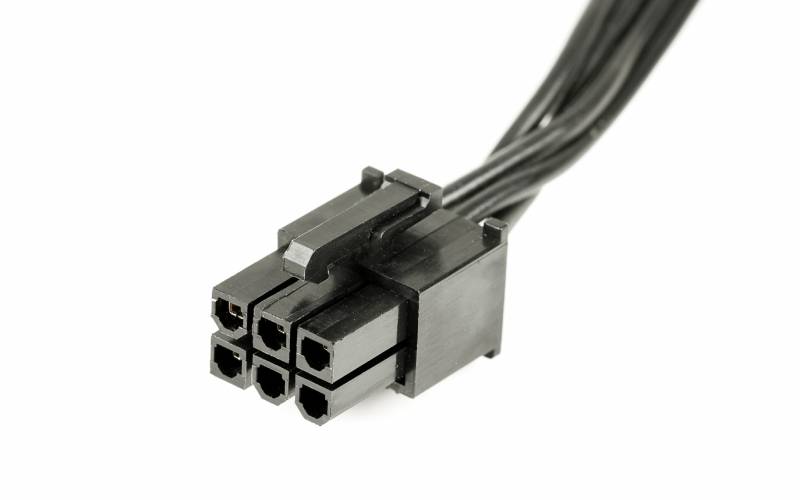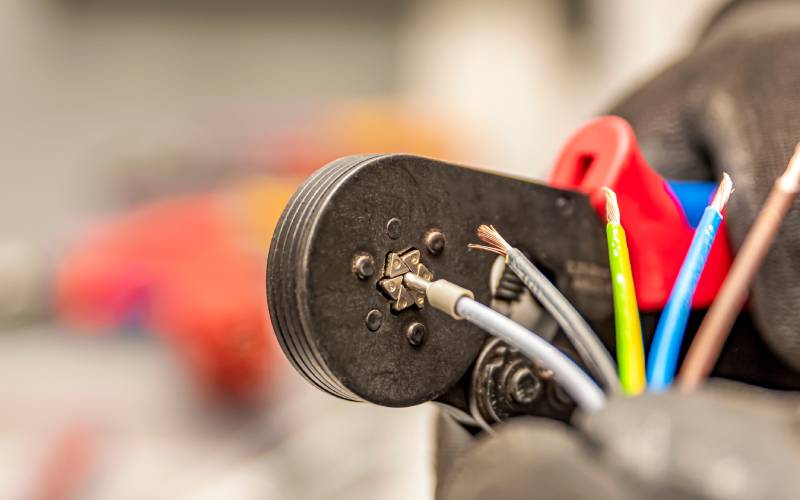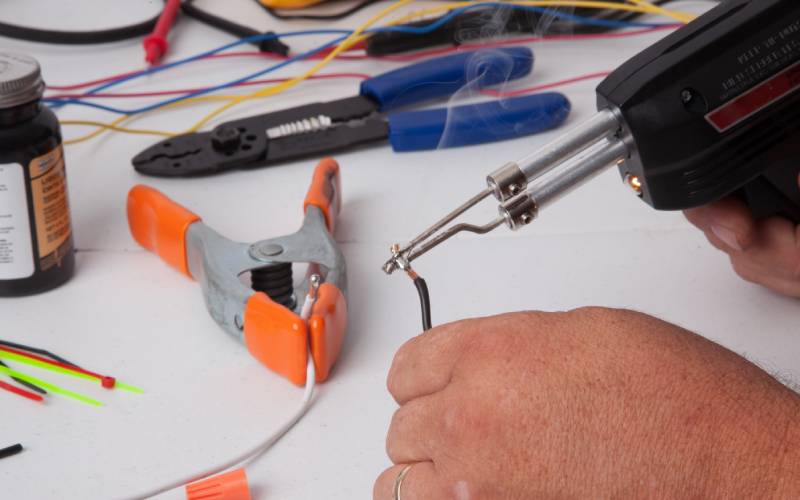10 Termination Methods for 6-Cavity Connectors

Building robust and reliable connections for 6-cavity connectors can mean the difference between optimal performance and system failure. From professionals working on critical installations to engineers refining product designs, understanding proper termination techniques is essential. This guide explores 10 termination methods for 6-cavity connectors, providing actionable insights to make your work reliable and secure. Master these techniques, enhance efficiency, and reduce potential issues with your connections.
The Importance of Choosing Proper Termination Methods
For 6-cavity connectors, proper termination is crucial for delivering uninterrupted functionality and providing long-term durability. Poorly executed terminations can lead to performance degradation, signal loss, and even catastrophic failures. Whether you are managing an industrial project, creating data infrastructure, or working on automotive wiring systems, understanding the right termination techniques allows you to prevent costly mistakes and maximize operational success.
Applications involving these connectors often require precise wire handling to guarantee tightly secured connections, error prevention, and compliance with stringent industry standards. Making informed choices about termination techniques strengthens electrical reliability while avoiding unnecessary downtime or maintenance.
Crimping for Secure Connections
Crimping is among the most widely used termination methods, as it ensures mechanically strong and electrically reliable connections for 6-cavity connectors. Professionals rely on calibrated crimpers to apply the correct force to wires and contact parts. This prevents issues such as loose connections or damage to the contact area.
One essential practice during crimping is stripping the wire to the appropriate length. When too much insulation is removed, the exposed conductor risks short circuits, while insufficient stripping prevents proper contact engagement. Identifying the ideal wire-stripping parameters allows you to maintain consistent success when performing crimping processes on connectors. For optimal results, always verify crimp quality using pull-testing techniques. This confirms both the electrical and mechanical integrity of the terminated wire.
Soldering for Enhanced Durability
Soldering provides unmatched durability and stability for termination purposes, making it ideal for demanding applications. This method establishes permanent electrical and mechanical interactions by melting solder material to bond wire and connectors.
Temperature control during soldering is critical. Excessive heat can damage insulation, disrupt the connector structure, and weaken surrounding components. On the other hand, insufficient heat may result in cold solder joints, undermining continuity and causing failure points.
Flux usage is another factor that professionals should consider. It removes oxidation, aiding in the formation of clean and strong joints. Ensuring this method is carried out efficiently guarantees robust reliability in electrical assemblies.
IDC for Precision
IDC (insulation displacement connection) termination offers speed and precision without prior wire stripping. IDC rapidly achieves reliable electrical contacts by displacing insulation as wires are inserted into specially designed slots. One main advantage of this method is the reduced handling time, making it ideal for mass production or high-volume installations.
However, maintaining accuracy remains essential during wire insertion. Misalignment or improper pressure can compromise contact integrity, leading to failures. Precision tools that guide wire placement help mitigate these issues and support optimal performance when using IDC techniques. Professionals working with this method must also confirm their connectors are compatible with IDC technology to avoid incompatibility risks.
Clamping for Industrial Applications
Clamping is one solution specifically tailored for high-vibration environments or heavy-duty operations. This method uses tightening mechanisms to lock wires firmly into 6-wire connectors, ensuring consistent contact under challenging conditions.
Clamping methods often incorporate additional retention elements, such as strain reliefs or locking tabs. These enhancements prevent wire damage or accidental disconnections due to physical stress or environmental exposure. Always work with the correct clamping tools to make sure connections are secure without overloading or compromising components. Studying torque recommendations specified by manufacturers prevents over-tightening or damaging sensitive connector parts.
Wire Wrapping Benefits
Wire wrapping provides precise and strong connections by tightly wrapping wires around square posts. The tension achieved during this process eliminates the need for solder or crimps, though its usage is generally confined to low- to medium-voltage applications.
This method allows for flexible modification or reconfigurations, making it an excellent choice during prototyping. Its reliability relies heavily on professional-grade wrapping tools to maintain consistent tension and accuracy. Deviation from these guidelines can cause compromised connections.
Heat-Shrink Tubing Insulation
Heat-shrink tubing supplements other termination methods for enhanced protection and insulation against moisture or contaminants. This technique involves covering connections with heat-shrink sleeves that securely mold around components when exposed to heat.
Proper application of heat-shrink tubing provides additional strain relief, reduces potential short circuits, and safeguards terminated connections against harsh environments. Pairing this technique with soldering or crimping ensures durable and safe installations. Select the tubing diameter carefully to match wire and connector sizes, as inconsistencies can prevent proper shrinkage. Furthermore, consistent heating prevents deformation or incomplete sealing.
Terminal Blocks
Connections with terminal blocks provide convenience and clarity during installations for modular or paneled infrastructure. Terminal blocks offer secure termination points for 6-cavity connectors without requiring interference to the main assembly when adjustments or maintenance are performed.
These blocks standardize wire termination, eliminating the need for solder or crimping in installations requiring flexibility. Each conductor is fastened within designated slots, simplifying troubleshooting and updating processes for professionals handling complex systems. Clear labeling enhances accessibility and supports continuity tests during setup.
Screw Termination Reliability
Screw terminations offer consistent and repeatable results by mechanically anchoring wires to connector contacts via threaded mechanisms. Proper torque application is vital when tightening screws to avoid loosening over time.
This method shines where consistent vibration or movement occurs by providing secure contact retention. However, misapplication or excessive force may damage threads. Careful alignment helps maintain integrity across multiple maintenance and testing cycles. For enhanced longevity, use corrosion-resistant screws, particularly for outdoor or high-humidity projects requiring added durability.
Push-In Connections
Push-in connections feature a tool-free, user-friendly design. These connectors ensure reliable contact engagement with minimal effort by inserting stripped wires into spring-loaded terminals, making them ideal for quick installations.
Despite this simplicity, operators must make sure there is correct wire placement to prevent misalignment. Testing engagement by gently pulling wires verifies connection security and avoids unexpected failures. Push-in connections also feature visually clear indicators that show proper seating positions, offering peace of mind when implementing this method.
Hybrids for Maximum Compatibility
Combining multiple termination methods for hybrid assemblies improves overall versatility across diverse applications. For instance, integrating crimping and soldering ensures both mechanical stability and enhanced conductivity under specific scenarios.
Hybrid approaches are flexible solutions for professionals seeking custom-tailored designs. However, balancing mixed techniques requires familiarity with the compatibility requirements of the chosen methods. Adapting tools allow for seamless integration without compromising finished assembly quality.
Reliable performance and safety depend on understanding the proper techniques for terminating connectors. These 10 termination methods for 6-cavity connectors are essential techniques professionals can master to achieve efficiency and durability. Each approach offers unique benefits depending on specific project needs, environmental factors, and technical parameters.



You must login to post comments.